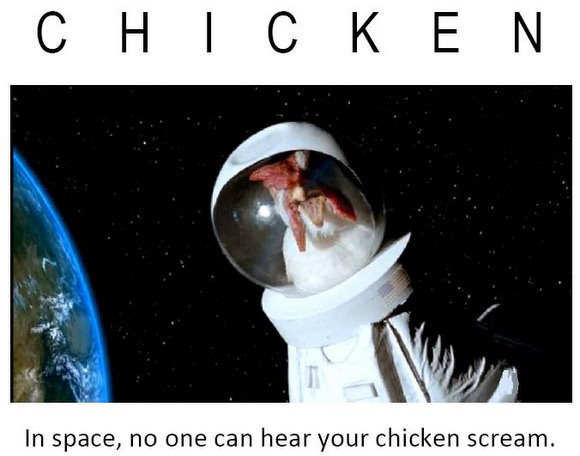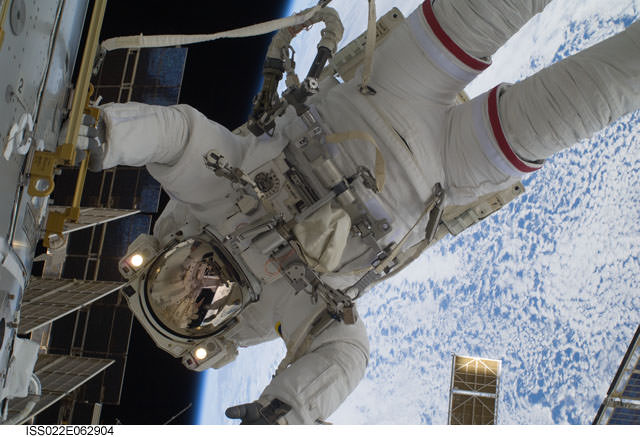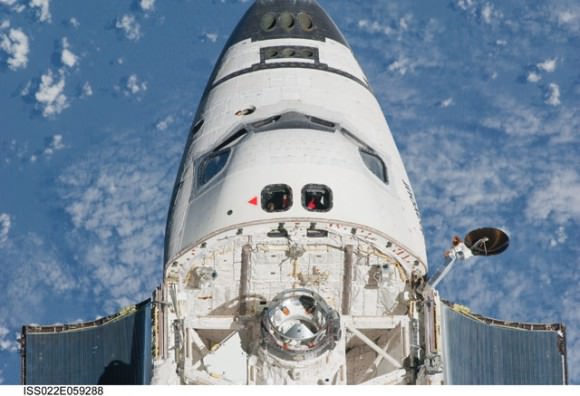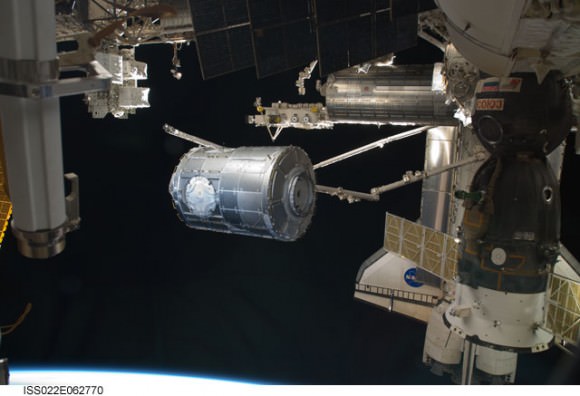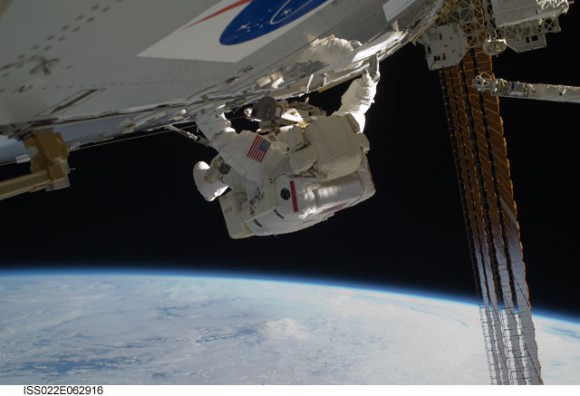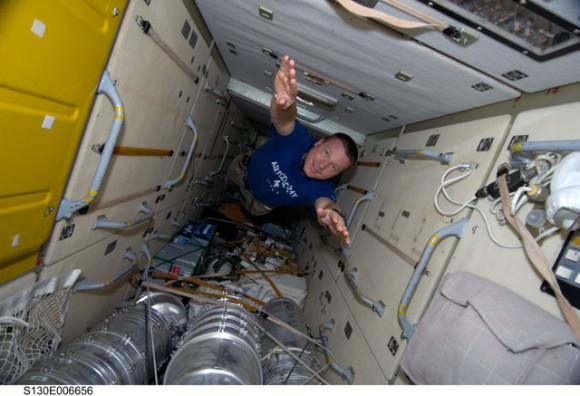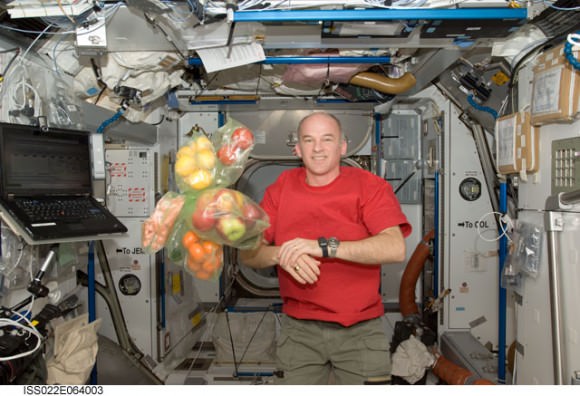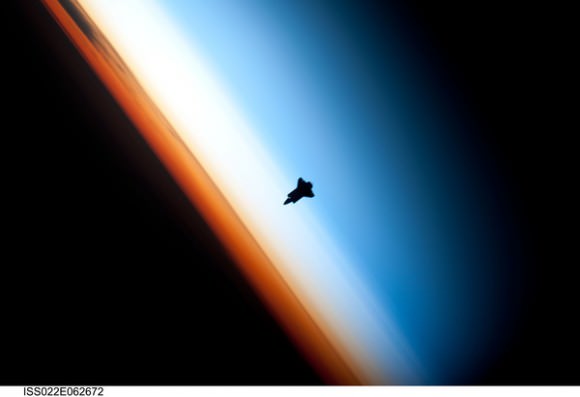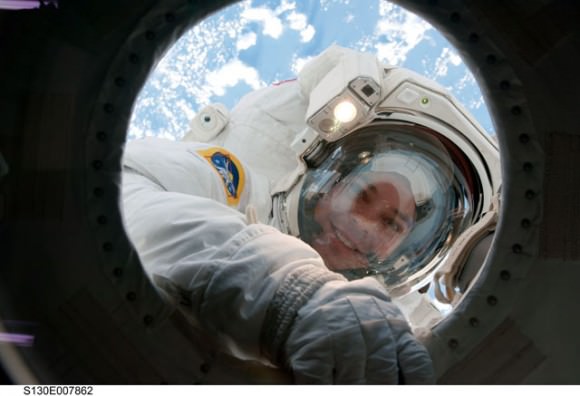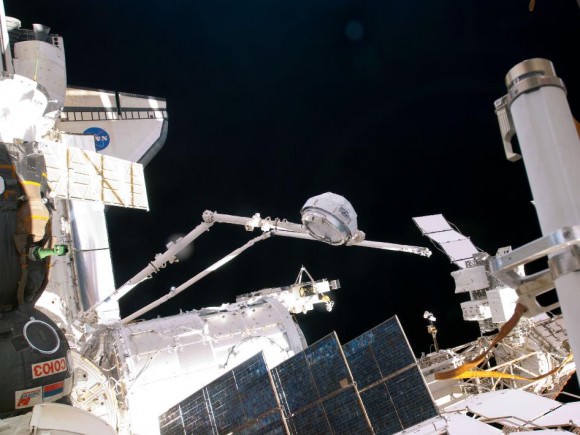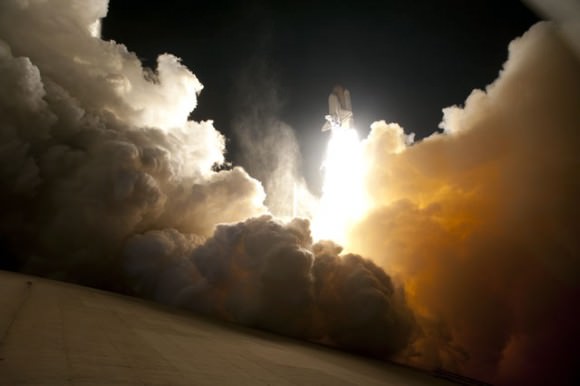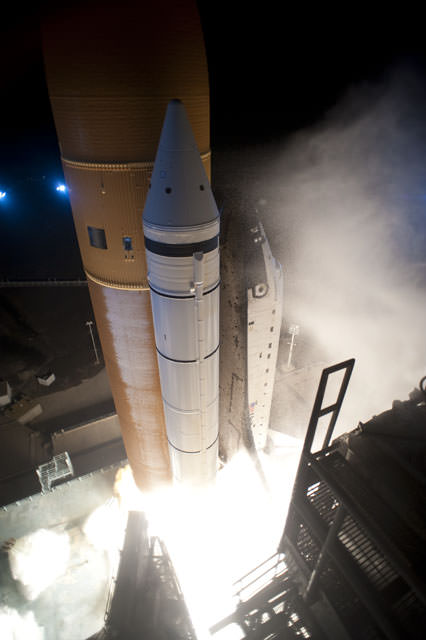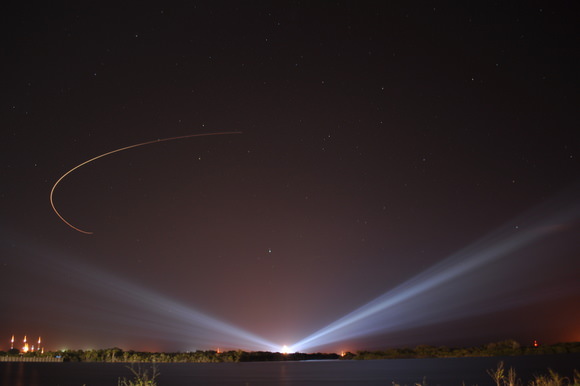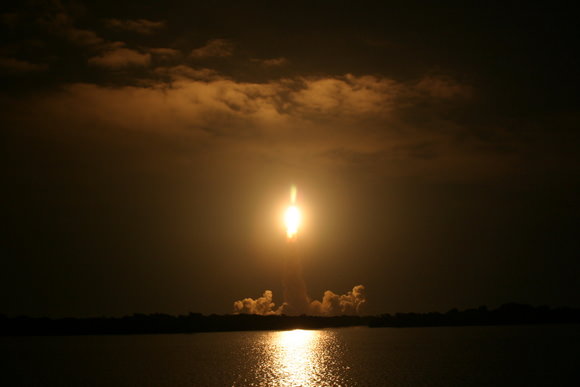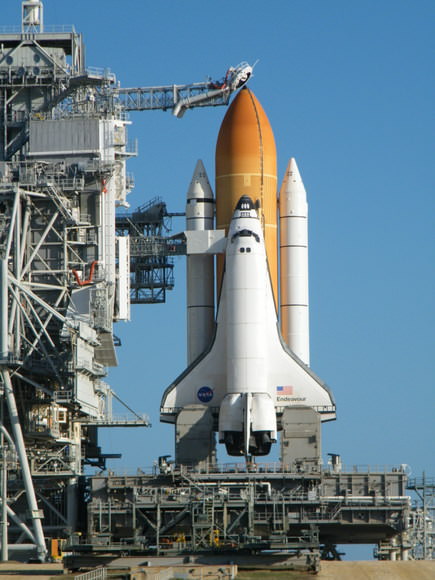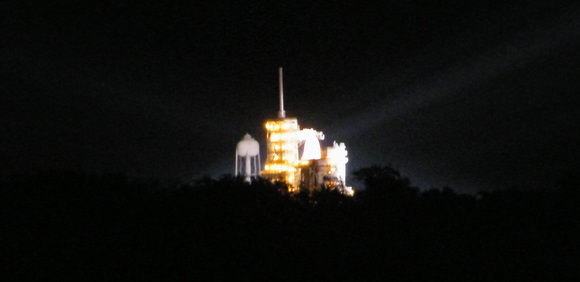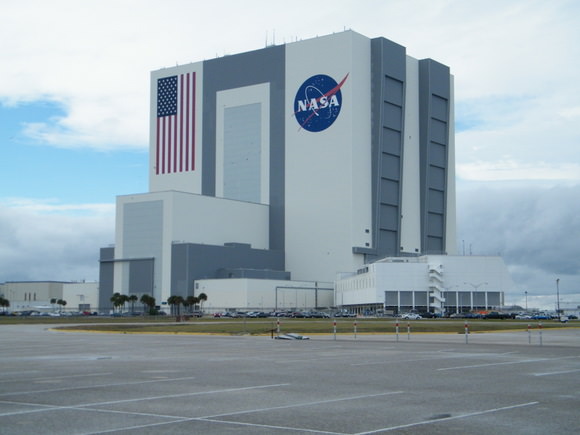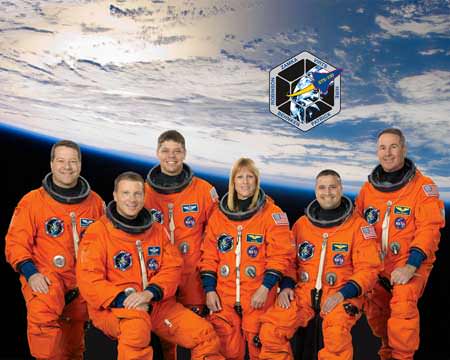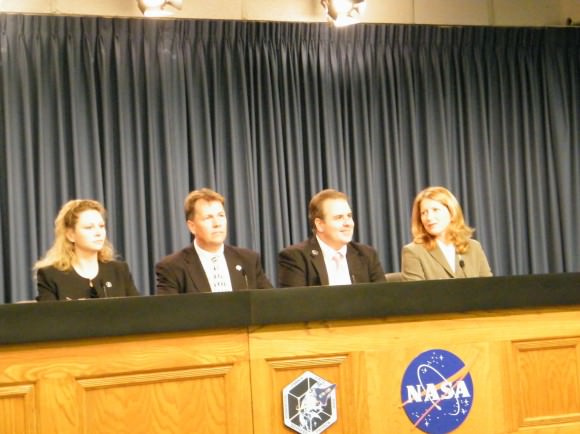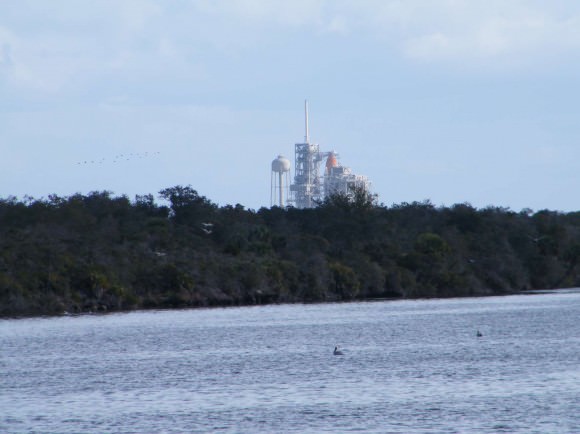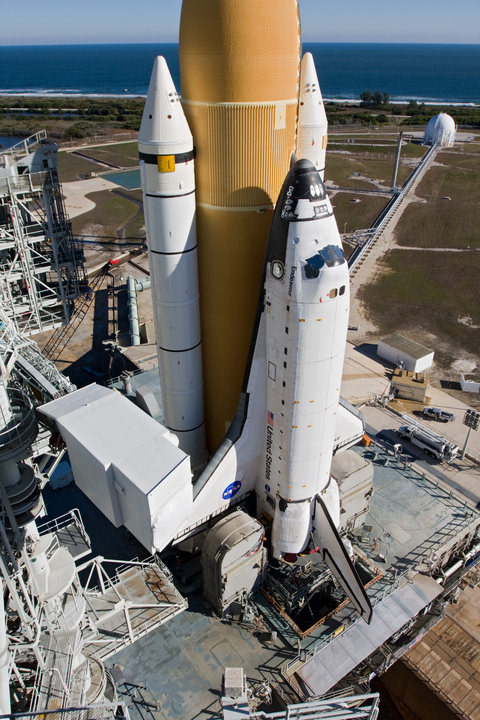[/caption]
With the internet now part of daily life on the International Space Station, inquiring minds want to know! Can astronauts visit any websites they want, and what kinds of download speeds do they have in space? And what about that chicken, seen above, that has been gracing the STS-130 execute packages? And what’s the view from the new cupola really like? Astronauts answered those questions and more, at the joint crew news conference last night, where I had the chance to talk the crew members of Endeavour and the ISS.
“Thanks for asking about the internet!” replied ISS astronaut T.J. Creamer with a laugh. “This is a project that many people have worked on to make this possible for us, and some have pulled their hair out to make it successful, so many thanks to those folks. We have access to any website we are allowed to go to as government employees – that’s my best answer! And in terms of download speeds – you know, back in the old days, it kind of compares to 9.6 and the 14.4 kilobyte modems, so it’s not really fast enough to do large file exchange or videos, but it certainly lets us to do browsing and the fun reading we want to do, or get caught up on current events on that day. It’s a nice outreach for us, and of course you’ve heard about the Twittering which is a nice feature that we can partake in also.”
Later, Soichi Noguchi said he could keep up with results of the Olympics just like those of on the ground. Noguchi has been taking advantage of Twitter by sending several Twitpics from space.
The personal web access on the ISS takes advantage of existing communication links to and from the station provides astronauts with email, texting, Twittering and other direct private communications, which NASA says will “enhance their quality of life during long-duration missions by helping to ease the isolation associated with life in a closed environment.”
As for the chicken on the STS-130 execute packages, the STS-130 crew was perplexed. “That is possibly an inside joke that we are not on the inside of,” answered Commander George Zamka. “We don’t see the front pages, so it’s probably on the front pages of the execute package that we don’t get.”
You can see the STS-130 execute packages (and chickens) at this link.
Asked about the views from the new cupola, the astronauts waxed poetic. “It’s so hard to put into words the view that we see out those beautiful seven windows,” Kay Hire said. “It’s like comparing a black-and-white analog picture to a super high-def color picture. It’s just phenomenal what we can see out there. The most stunning thing I’ve seen so far is just some beautiful thunderstorms from above. It’s really interesting to watch the way the lightning jumps from cloud to cloud far below us.”
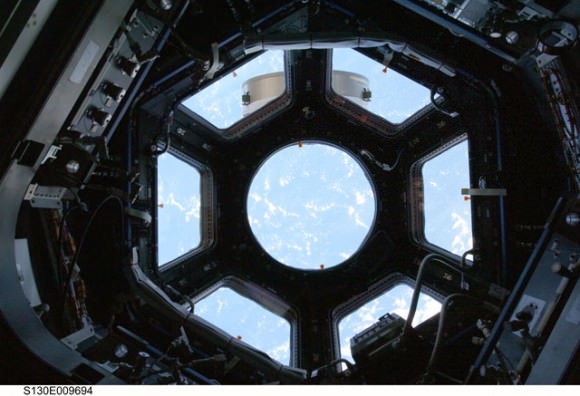
“Getting to look out the shuttle windows and the station windows has been awesome,” added pilot Terry Virts. “But when we looked out the cupola, it’s impossible to put into words, but it took my breath away. We’ve only had a few opportunities to go down there because we have been busy inside doing work, but I think the favorite view that I’ve had has been watching a sunrise.
“At night, you can see cities if you’re over land and then when you pass into the sunlight you get the blue limb (of Earth) and then it turns into pink and different colors like that and then when the sun pops up, it’s like an instantaneous floodlight in your eyes, it kind of overwhelms you. But the view is amazing. You can sit there and perceive the entire Earth limb and you can really see the Earth has that round shape. It’s just amazing.”
ISS Commander Jeff Williams agreed. “To be able to see the entire Earth in one glance and see the entire limb of the Earth all the way around and see the spherical shape of the Earth is going to be new to us. Obviously, we’ve seen a lot of those segments of that view before, but only one segment at a time through a narrower field of view,” he said. “We have taken a lot of photography up here, we will continue to do so. The cupola will offer us a very unique and new opportunity for photography in a new way, particularly with wide angle lenses, which we’re already playing with a little bit to try to be able to share that experience with folks on Earth.”
Spacewalker Bob Behnken said the view from the cupola was as good as or maybe better than the view from a being out on an EVA.
“The reason being you actually have time to look around through all the windows,” he said. “Usually during a spacewalk, there’s a fair amount of work to get done. There wasn’t a lot of time for the sightseeing you might like to do out of a window like cupola.
“The other thing the cupola affords you is the opportunity to share some of those views with other people. We’re really limited on the photography we can do during a spacewalk, but taking one of the HD cameras or some still photos inside the cupola is really going to allow us to share those beautiful sunrises and sunsets and Earth views in general with everyone on the ground.”
You can watch the entire ISS/STS-130 news conference below.

